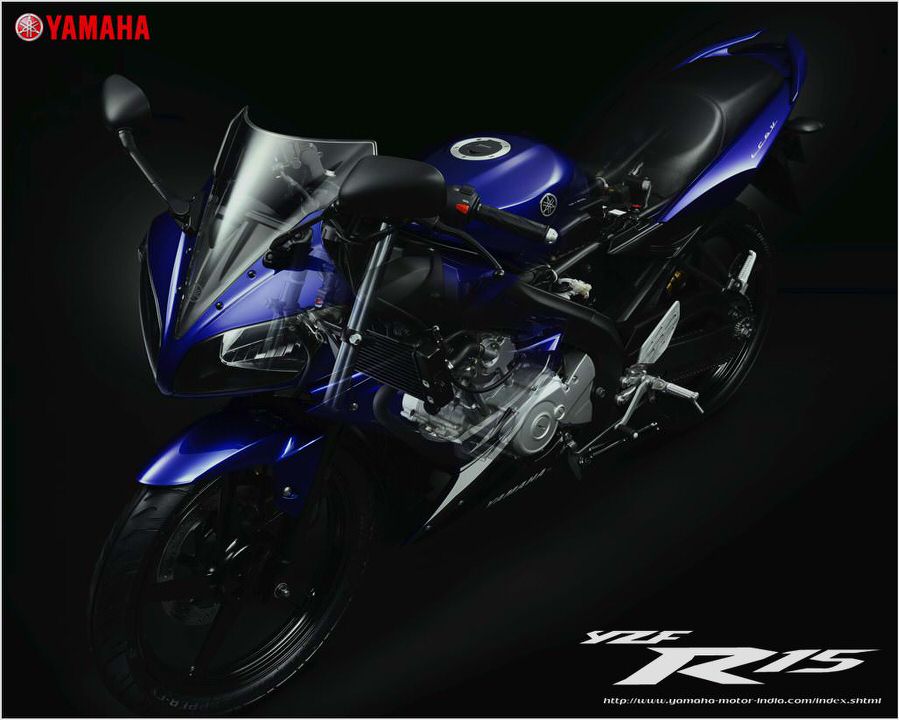
Small displacement sportbike gets a makeover
Small-displacement sportbikes are getting more attention as the world economy continues to struggle. The 150cc Yamaha YZF-R15 was the first sportbike produced in India back in 2008, and the fuel-injected model now receives a host of upgrades and is offered to the Australian, New Zealand and Colombian markets. Read the below review and let us know if such a small sportbike could be successful in North America.
Yamaha ’s YZF-R15 has offered riders the ultimate sportbike in its 150cc segment, managing to retain the unadulterated feel of its legendary mentors, the supersports YZF-R6 and R1.
Powering around a set of corners at the Madras Motorsports track, India, the YZF-R15 Version 2.0 feels every bit as good as Yamaha’s “Racing Instinct” philosophy suggests. Just how much better is the R15 V2.0, and can it reignite the passion amongst sport bikers as did the original?
The list of changes is extensive. Although the aggressive twin-headlights remain familiar, there’s a beefier mid-fairing region, now with slotted vents that Yamaha claim improve the motorcycle’s aerodynamic efficiency by 4 percent. A stylish new mock carbon fiber panel looks a part of the frame, while V 2.0 also boasts an extensively altered, steeply angled and waspish looking split-seat.
At the rear you spot a higher, YZF-R6 inspired LED tail-lamp. Below this sits a smartly machined, alloy number plate and turn indicator mount. The exhaust is far better looking, more aggressively angled and you can’t miss the elaborate new rear wheel hugger which doesn’t really fit in well on a sportbike like this.
Look closer and finer changes are apparent; the still compact R15 looking longer than its predecessor, as its wheelbase has extended 55mm (nearly 2 inches), thanks to a new alloy swingarm, rare for this class of motorcycle. A larger 130/70 section radial rear tire completes the muscular looking rear. The front disc brake enjoys a larger carrier, while the rear disc is now slightly bigger at 220mm.
The ECU has modified tuning for improved throttle response, and the throttle operating cam is shaped for more linear response. Yamaha has sadly failed to add power to the new model, and enthusiasts are sure to feel let down when noticing the unchanged 16.8 hp at 8500 rpm peak power output. What’s more, the V2.0 tips the scales at 5kg (11 lbs) more than the original R15.
It now claims a 300-pound curb weight.
Sling a leg over the YZF-R15 V2.0, and you immediately understand how the riding position is so much more track focused, with its relatively forward-set stance. A light, unobtrusive buzz from the 150cc, liquid-cooled, single-cylinder powerplant is familiar as I make my way around the track on a cautious initial lap.
What’s immediately apparent is how the power deliver has improved. Unlike earlier R15’s that had to be wound up to really get going, the V2.0 is clearly more responsive, with a healthier punch in the bottom and mid-range of its powerband. The bike revs cleanly to its 10,000-rpm limiter. This more user-friendly nature vastly improves the R15’s public road abilities, which was a sore point on the earlier motorcycle.
As speeds increase, it’s clear that fears of any significant drop in performance are unfounded. Pleasantly, our tests confirm the new Yamaha as faster, the V2.0 achieving 100 kph (62.5 mph) from standstill half a second quicker than managed by us on the older motorcycle, in 14.14 seconds.
Yamaha’s steel Deltabox frame is the magic wand that grants the R15 rock-solid poise around corners, and an almost feline-like affinity for quick direction changes. It’s a case of the best getting better, the longer alloy swingarm and improved tires significantly improving stability. A big change is palpable when attacking corners, with some negligible sacrifice to flickability, but a newfound stability there for the asking in a corner.
The R15 V2.0 is more forgiving, and prods you to ride harder and faster. The sportier riding position and heavier front weight bias provide a more connected, direct feel, which experienced riders will exploit to extract better pace.
- AutoWeek Editors Honor the Best of the 2009 Tokyo Motor Show — DETROIT…
- Yamaha WR450F Motorbike Service Manual WR450 F
- Yamaha RD 350/400 – Vintage Motorcycles Online
- XJ6 Diversion F ABS 2013 Metropolis Greenwich
- R1100S in the Snow (Long) – Pelican Parts Technical BBS

